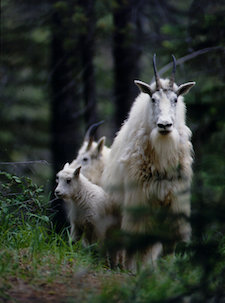Species and ecosystems at risk
Species or ecosystems that are at risk of being lost can be assessed as endangered, threatened or of special concern. B.C. has an internationally important role in conservation with its diversity of ecosystems and landscapes that provide homes for many regionally, nationally, and globally significant species.
B.C. has an internationally important role in conservation with its diversity of ecosystems and landscapes that provide homes for many regionally, nationally, and globally significant species.
As the number of species that are assessed as endangered, threatened, or of special concern continues to grow it is more important than ever that all there is cooperation between levels of government. Working together at federal, provincial, and local levels is essential to protect species, their habitats and biodiversity overall.
See what B.C.'s government is doing to take conservation action and learn ways you can participate.
Most species-at-risk programs, across Canada and internationally, follow a similar approach. They generally assess the status of species to determine if they are endangered or threatened, establish a list of species that are legally considered to be at risk, plan for recovery actions, apply protection and recovery measures, and report on the actions that have been taken.
Including all levels of government
Federal: B.C. works with the Federal Government to coordinate species at risk programming with the goal of preventing species from becoming extinct. The following agreements indicate the spirit in which we work.
- Accord for the Protection of Species at Risk in Canada (PDF, 1.3MB)
- Canada-British Columbia Agreement on Species at Risk (PDF, 1.5MB)
Provincial: B.C. uses legislative tools, including regulations and designations to protect species at risk and their habitats and encourages the engagement in voluntary stewardship actions.
Local: The Species and Ecosystems at Risk Local Government Working Group promotes protection of species and ecosystems at risk on municipal, regional and private lands.
Assessing what's at risk
Several factors are used to determine what species and ecosystems are at risk of extinction. Some species are naturally rare, not commonly found, but not necessarily at risk.
- Learn how species and ecosystems are assessed and ranked in B.C. at Conservation Data Centre (CDC).
- Visit the Committee on the Status of Endangered Wildlife in Canada (COSEWIC) to learn more about species that are considered nationally at risk.
Planning for recovery
Scientific and traditional information helps to guide the implementation of recovery or conservation actions for species and ecosystems that are at risk. These planning documents often allow access to prioritized funding for recovery and promote good conservation and stewardship work.
Over 220 recovery documents have been produced or co-produced with the federal government and these are used by a wide range of organizations and decision makers. Learn more about recovery planning and species-specific recovery documents.
Taking action
Recovery actions may be carried out by a variety of governmental and non-governmental organizations, but this work is most effective when academia, industry, First Nation governments and organizations, landowners, and land managers cooperate and collaborate to improve outcomes for species at risk.

